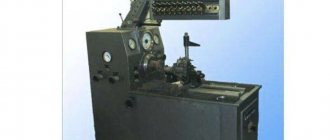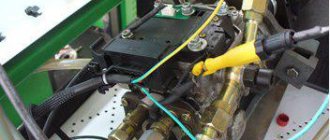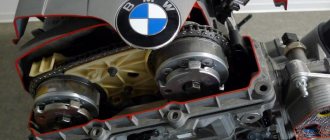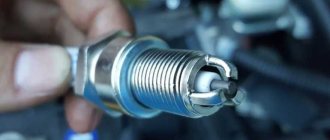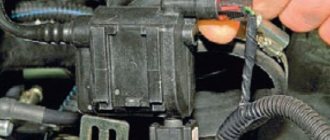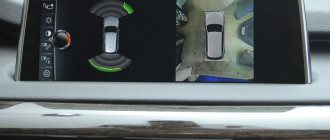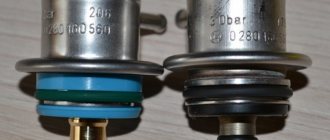There is no system in the car that is not needed. But if we conditionally divide them into main and secondary, then the first category will include fuel, ignition, cooling, and lubricants. Each internal combustion engine will have one or another modification of the listed systems.
True, if we talk about the ignition system (its design and the principle of operation it has are described here), then only a gasoline engine or an analogue that is capable of running on gas receives it. A diesel engine does not have this system, but the ignition of the air-fuel mixture has a similar principle. The ECU determines the moment when this process needs to be activated. The only difference is that instead of a spark, a portion of fuel is supplied to the cylinder. Due to the high temperature of the highly compressed air in the cylinder, diesel fuel begins to burn.
The fuel system can have either single injection (a point method of spraying gasoline) or distributed injection. The differences between these modifications, as well as other injection analogues, are described in detail in a separate review. Now let’s focus on one of the most common developments, which is found not only in budget cars, but also in many premium segment models, as well as sports cars running on gasoline (diesel engines use only direct injection).
This is a multi-point injection or MPI system. Let's discuss the design of this modification, what is the difference between it and direct injection, as well as what its advantages and disadvantages are.
The basic operating principle of the MPI system
Before understanding the terminology and operating principle, it should be clarified that the MPI system is installed exclusively on the injector. Therefore, those who are thinking about the possibility of upgrading their carburetor internal combustion engine should consider using other methods of garage tuning.
In the European market, car models with MPI markings on the power unit are not uncommon. This is an abbreviation for multi-point-injection or multi-point fuel injection system.
The very first injector replaced the carburetor, thanks to which the control of the enrichment of the air-fuel mixture and the quality of filling the cylinders is no longer carried out by mechanical devices, but by electronics. The introduction of electronic devices is primarily due to the fact that mechanical devices have certain limitations in terms of fine-tuning systems.
Electronics copes with this task much more efficiently. Plus, maintenance for such cars is not so frequent, and in many cases it comes down to computer diagnostics and resetting detected errors (this procedure is described in detail here).
Now let's look at the operating principle according to which fuel is sprayed to form a VTS. Unlike single injection (considered an evolutionary modification of the carburetor), the distributed system is equipped with an individual nozzle for each cylinder. Today, another effective scheme is being compared with it - direct injection for gasoline internal combustion engines (there is no alternative in diesel units - in them diesel fuel is sprayed directly into the cylinder at the end of the compression stroke).
To operate the fuel system, the electronic control unit collects data from many sensors (their number depends on the type of vehicle). The key sensor, without which no modern vehicle will operate, is the crankshaft position sensor (this is discussed in detail in another review).
In such a system, fuel is supplied to the injector under pressure. Spraying occurs into the intake manifold (read more about the intake system here), as is the case with the carburetor. Only the distribution and mixing of fuel with air occurs much closer to the intake valves of the gas distribution mechanism.
When a certain sensor fails, a certain emergency mode algorithm is activated in the control unit (which one depends on the broken sensor). At the same time, the Check Engine message or engine icon lights up on the car’s dashboard.
Another classification option
The system can be of several types and options.
- A simultaneous combination is rare from a practical point of view. During one revolution, all the nozzles in it fire in simultaneous order.
- Parallel operation (in pairs) - during one revolution of the shaft, the injectors fire in pairs, once per revolution.
- Phased, sequential - when each of the nozzles is separately regulated during one rotation of the shaft. In this case, the element is opened once before the intake.
Regardless of the classification option, all mechanisms have differences in a number of parameters taken into account during operation.
Multipoint injection system design
The operation of multipoint distributed injection is inextricably linked to the air supply, as in other fuel systems. The reason is that gasoline is mixed with air in the intake tract, and to prevent it from settling on the walls of the pipes, the electronics control the position of the throttle valve, and in accordance with the flow force, the injector will inject a certain amount of fuel.
A drawing of a multipoint injection fuel system will consist of:
- Throttle valve;
- Fuel rail (a line that makes it possible to distribute gasoline to the injectors);
- Injectors (their number is identical to the number of cylinders in the engine design);
- DMRV sensor;
- Gasoline pressure regulator.
All components operate according to the following scheme. When the intake valve opens, the piston performs the intake stroke (moves towards bottom dead center). Due to this, a vacuum is created in the cylinder cavity, and air is sucked from the intake manifold. The flow moves through the filter, and also passes near the mass air flow sensor and through the throttle body (more about its function in another article).
In order for the vehicle circuit to function, in parallel with this process, gasoline is injected into the passing stream. The nozzle is designed in such a way that the portion is sprayed onto the mist, which ensures the most efficient preparation of VTS. The better the fuel is mixed with the air, the more efficient the combustion will be, and the less load on the exhaust system, the key component of which is the catalytic converter (read about why every modern car is equipped with it here).
